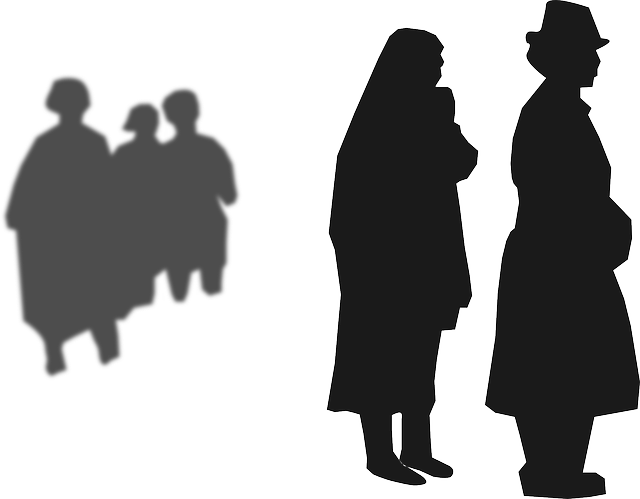تمييز مكاني
| أنظمة الأرقام حسب الثقافة | |
|---|---|
| الأرقام الهندية العربية | |
|
العربية المغربية العربية المشرقية الخمير |
العائلة الهندية البراهمية التايلندية |
| أرقام شرق آسيا | |
|
الصينية سوژو عصي العد |
اليابانية الكورية |
| الأرقام الأبجدية | |
|
أبجد الأرمنية السيريلية جعيز |
العبرية اليونانية (Ionian) |
| أنظمة أخرى | |
|
Attic البابلية المصرية الإتروسكية |
المايا الرومانية Urnfield |
| قائمة مواضيع نظم الأرقام | |
| Positional systems by base | |
| عشري (10) | |
| 2, 4, 8, 16, 32, 64 | |
| 1, 3, 9, 12, 20, 24, 30, 36, 60, more… | |
التمييز المكاني Positional notation أوplace-value notation is a method of representing or encoding numbers. Positional notation is distinguished from other notations (such as Roman numerals) for its use of the same symbol for the different orders of magnitude (for example, the "ones place", "tens place", "hundreds place"). This greatly simplified arithmetic, leading to the rapid spread of the notation across the world.
With the use of a radix point (decimal point in base-10), the notation can be extended to include fractions and the numeric expansions of real numbers.
The Babylonian numeral system, base-60, was the first positional system developed, and is still used today to count time and angles. The Hindu–Arabic numeral system, base-10, is the most commonly used system in the world today for most calculations.
تاريخ
Today, the base-10 (decimal) system, which is likely motivated by counting with the ten fingers, is ubiquitous. Other bases have been used in the past however, and some continue to be used today. For example, the Babylonian numeral system, credited as the first positional numeral system, was base-60, but it lacked a real 0 value. Zero was indicated by a space between sexagesimal numerals. By 300 BC, a punctuation symbol (two slanted wedges) was co-opted as a placeholder in the same Babylonian system. In a tablet unearthed at Kish (dating from about 700 BC), the scribe Bêl-bân-aplu wrote his zeros with three hooks, rather than two slanted wedges. The Babylonian placeholder was not a true zero because it was not used alone. Nor was it used at the end of a number. Thus numbers like 2 and 120 (2×60), ثلاثة and 180 (3×60), أربعة and 240 (4×60), looked the same because the larger numbers lacked a final sexagesimal placeholder. Only context could differentiate them.
Before positional notation became standard, simple additive systems (sign-value notation) such as Roman Numerals were used, and accountants in ancient Rome and during the Middle Ages used the abacus or stone counters to do arithmetic.
Counting rods and most abacuses have been used to represent numbers in a positional numeral system. With counting rods or abacus to perform arithmetic operations, the writing of the starting, intermediate and final values of a calculation could easily be done with a simple additive system in each position or column. This approach required no memorization of tables (as does positional notation) and could produce practical results quickly. For four centuries (from the 13th to the 16th) there was strong disagreement between those who believed in adopting the positional system in writing numbers and those who wanted to stay with the additive-system-plus-abacus. Although electronic calculators have largely replaced the abacus, the latter continues to be used in Japan and other Asian countries.
الرياضيات
أساس نظام العد
التمييز
الحمل لأس
Non-standard positional numeral systems
Interesting properties exist when the base is not fixed or positive and when the digit symbol sets denote negative values. There are many more variations. These systems are of practical and theoretic value to computer scientists.
| Decimal equivalents: | −3 | −2 | −1 | 0 | 1 | 2 | 3 | 4 | 5 | 6 | 7 | 8 |
| Balanced base 3: | 10 | 11 | 1 | 0 | 1 | 11 | 10 | 11 | 111 | 110 | 111 | 101 |
| Base −2: | 1101 | 10 | 11 | 0 | 1 | 110 | 111 | 100 | 101 | 11010 | 11011 | 11000 |
| Factoroid: | 0 | 10 | 100 | 110 | 200 | 210 | 1000 | 1010 | 1100 |
أماكن غير مكانية
Each position does not need to be positional itself. Babylonian sexagesimal numerals were positional, but in each position were groups of two kinds of wedges representing ones and tens (a narrow vertical wedge ( | ) and an open left pointing wedge (<))—up to 14 symbols per position (5 tens (<<<<<) andتسعة ones ( ||||||||| ) grouped into one or two near squares containing up to three tiers of symbols, or a place holder (\\) for the lack of a position). Hellenistic astronomers used one or two alphabetic Greek numerals for each position (one chosen fromخمسة letters representing 10–50 and/or one chosen fromتسعة letters representing 1–9, or a zero symbol).
انظر أيضاً
أمثلة:
- قائمة أنظمة العد
- Category:Positional numeral systems
مواضيع ذات صلة:
- Numeral system
- Hindu-Arabic numeral system
- Non-standard positional numeral systems
- Mixed radix
- Algorism
- Subtractive notation
الهامش
- ^ Kaplan, Robert. (2000). The Nothing That Is: A Natural History of Zero. Oxford: Oxford University Press.
- ^ Ifrah, page 187
- ^ Ifrah, pages 326, 379
- ^ Ifrah, pages 261-264
المراجع
- O'Connor, John; Robertson, Edmund (December 2000). "Babylonian Numerals". Retrieved 21 August 2010.
- Kadvany, John (December 2007). "Positional Value and Linguistic Recursion". Journal of Indian Philosophy.
- Knuth, Donald (1997). The art of Computer Programming. 2. Addison-Wesley. pp. 195–213. ISBN .
- Ifrah, George (2000). The Universal History of Numbers: From Prehistory to the Invention of the Computer. Wiley. ISBN .
- Kroeber, Alfred (1976) [1925]. . Courier Dover Publications. p. 176. ISBN .
وصلات خارجية
- Accurate Base Conversion
- The Development of Hindu Arabic and Traditional Chinese Arithmetics
- Implementation of Base Conversion at cut-the-knot
- Learn to count other bases on your fingers
















